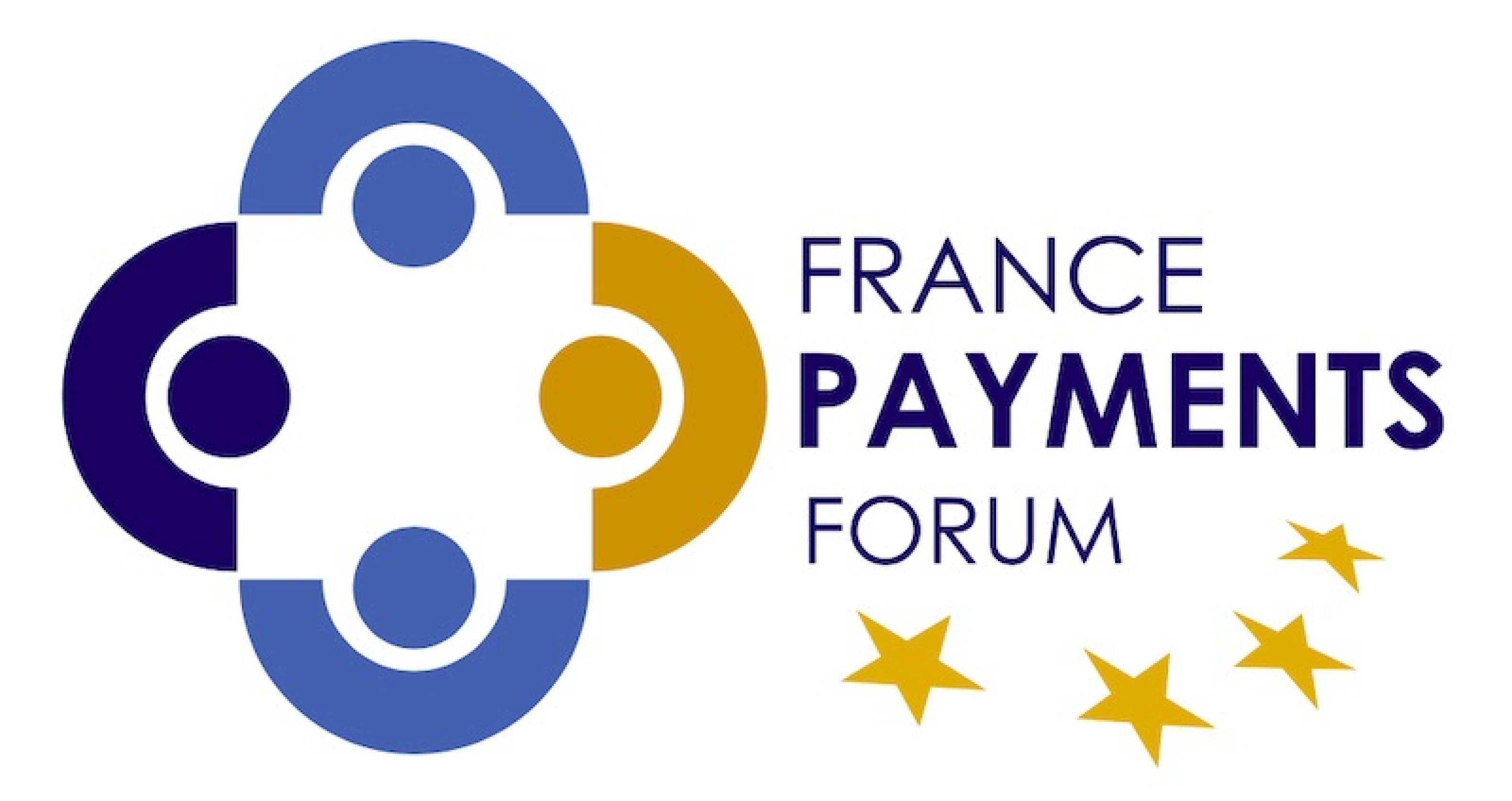
🇫🇷 France
Retour sur la conférence Banque de France du 6 mai « Préserver la confiance dans un monde plus incertain »[1].
Dans son propos introductif Denis Beau a développé trois points : (1) l’innovation technologique peut être la meilleure comme la pire des choses en matière de sécurité des paiements ; (2) la sécurité des paiements doit associer et impliquer tous les acteurs de la chaîne ; (3) au regard du contexte actuel, le lien entre la sécurité et la souveraineté des moyens de paiement est appelé à se renforcer.
Après une intervention de Renaud Labelle (ANSSI), la session de la matinée s’est poursuivie avec deux tables rondes sur l’Intelligence artificielle, la première sur l’IA comme outil de détection des tentatives de fraude, la seconde sur les risques liés à l’utilisation de l’IA par les fraudeurs.
 Notre commentaire : Cette matinée assez riche et probante montre que désormais l’IA est devenue un instrument courant des fraudeurs et qu’il faut se donner des moyens importants pour en informer les citoyens et pour combattre ces nouvelles formes de fraude
Notre commentaire : Cette matinée assez riche et probante montre que désormais l’IA est devenue un instrument courant des fraudeurs et qu’il faut se donner des moyens importants pour en informer les citoyens et pour combattre ces nouvelles formes de fraude
Erick Lacourrège a ouvert la session de l’après-midi en développant deux points : (1) le contexte actuel nous invite à prendre conscience de notre souveraineté en matière de paiements ; (2) la stratégie du CNMP donne un cap clair sur nos ambitions, et nous devons tous nous en donner les moyens.
La session de l’après-midi s’est poursuivie avec deux table rondes, la première sur la souveraineté des paiements à l’ère du numérique, la seconde sur la souveraineté et la résilience dans le secteur fiduciaire. Et entre ces deux tables rondes, M. Seidemann, CEO de G+D Currency Technology, est intervenu sur le thème : « repenser la monnaie traditionnelle dans le monde numérique ».
Programme de la conférence (document PDF).
[1] La Banque de France a récemment mis en ligne les vidéos de cette conférence, ce qui nous donne l’occasion d’y revenir plus en détail dans cette newsletter. Vidéo de la session du matin (OSMP) . Vidéo de la session de l’après-midi (CNMP).
Fraude aux moyens de paiement
Le Ministère de l’Économie, des Finances et de la Souveraineté industrielle et numérique, la Banque de France, la FBF et l’OSMP ont publié le 18 juin un communiqué appelant de nouveau les Français à la vigilance face aux tentatives de fraude aux moyens de paiement et annonçant le lancement d’une vaste campagne de sensibilisation.
Cash
Le CNMP a publié son rapport 2024 sur l’état des lieux de l’accès du public aux espèces (document PDF).
Dans son communiqué du 24 juillet, le CNMP indique que ce rapport confirme le maintien à un excellent niveau de l’accessibilité aux billets en France métropolitaine avec un maillage du territoire qui se maintient d’une année sur l’autre ».
Dans son communiqué du 24 juillet, la FBF souligne que « Même si l’utilisation des espèces diminue en France, les banques veillent, aux côtés de l’ensemble de l’écosystème, à ce que tous les Français y aient accès. L’accessibilité aux espèces reste ainsi, comme cela était le cas les années précédentes, à un très haut niveau ».
 Europe
Europe
Services TARGET
La BCE a publié son rapport 2024 sur les services TARGET (T2, T2S et TIPS) Dans son communiqué du 4 juillet, la BCE souligne notamment que les volumes traités par le service TIPS ont quintuplé en 2024 (+402%) pour atteindre 1,35 milliards de transactions, dont environ les deux tiers en couronne suédoise (la Suède ayant migré à TIPS en février 2024). Ceci signifie que les transactions en euro ont pour leur part quasiment doublé, avec une forte accélération au dernier trimestre 2024 en lien avec les préparatifs de l’entrée en application, le 9 janvier 2025, de l’obligation de recevoir des paiements instantanés.
Rappelons que la Banque du Danemark et la Banque de Norvège ont également signé des accords de participation à TIPS : le Danemark a migré à TIPS en avril 2025 et la migration de la Norvège est prévue pour mi-2028.
Dans un blog publié le 14 juillet (« TARGET services, the backbone of European financial markets ») qui constitue en quelque sorte son « testament » (puisqu’il a quitté la BCE le 30 juin), Ulrich Bindseil souligne que depuis le lancement (mi-juin 2025) d’ECMS (Eurosystem Collateral Management System), les services TARGET couvrent désormais le « triangle magique » (Central bank money/Securities/Collateral). Il évoque ensuite les perspectives d’évolution des services TARGET, puis l’euro numérique et les travaux de l’Eurosystème sur la MNBC de gros (wholesale).
TIPS cross-currency business development task force
La BCE a organisé le 18 juin, en liaison avec la Banque du Danemark et la Banque de Suède, la première réunion de la TIPS cross-currency business development task force. Voir les supports des présentations
Steps for PSPs towards implementation (12 slides)
Outcome of the call for expression of interest (15 slides)
Cash
Dans un blog intitulé « Making euro cash fit for the future », Piero Cipollone explique que le cash, bien qu’il soit utilisé moins fréquemment dans les paiements, demeure indispensable et que la BCE s’attache à en garantir la disponibilité et l’acceptabilité
« We are fully committed to cash and are working to ensure that it remains widely available and accepted. And rest assured: a digital euro will not replace banknotes and coins but rather complement them, offering a “digital expression” of cash that expands the benefits of cash to digital payments. The availability of cash in both physical and electronic form will strengthen Europe’s autonomy in payments ».
 International
International
🔵 Stablecoins, tokenisation, Réglementation des cryptos
BRI
Le rapport 2025 de la BRI, publié à l’occasion de son Assemblée Générale du 24 juin, propose dans son chapitre III («The next-generation monetary and financial system ») une analyse de la tokenisation et des stablecoins, résumée comme suit dans le communiqué BRI du 24 juin :
- Building on the proposal for a unified ledger, the « trilogy » of tokenised central bank reserves, commercial bank money and government bonds is the next logical step to deliver profound change for the financial system.
- Tokenisation can enhance efficiency and open new possibilities in cross-border payments, securities markets and beyond, while maintaining the key principles of sound money: singleness, elasticity and integrity.
- Stablecoins as a form of sound money fall short, and without regulation pose a risk to financial stability and monetary sovereignty.
FSB
Dans sa lettre du 14 juillet aux ministres des finances et gouverneurs du G20, Andrew Bailey, nouveau président du FSB, présente ses priorités, parmi lesquelles l’évaluation du rôle des stablecoins.
« Assessing the increasing role of stablecoins for payment and settlement purposes. We should continue to ensure that we are implementing our agreed recommendations, monitoring developments in this area and collaborating across jurisdictions and with the standard-setting bodies where relevant ».
Royaume-Uni
Le gouvernement britannique a publié le 15 juillet sa Wholesale Financial Markets Digital Strategy, en soutien de l’ambition de faire du Royaume-Uni la « Fintech capital of the world », comme l’illustrent les engagements suivants :
The government commits to:
- Supporting different digital payment innovations, including stablecoins and tokenised deposits. The regulators will explore how stablecoins can be utilised in the Digital Securities Sandbox.
- Providing innovative and flexible legislation and regulation to facilitate new digital infrastructures in the UK market, and acting quickly to make any necessary regulatory changes permanent.
- Working with the regulators to provide further clarity around the regulatory approach across key areas, including payments, funds and prudential requirements.
Government vows to make UK ‘fintech capital of the world’ (Finextra, 15 juillet)
Etats-Unis
La Chambre des représentants a adopté le 17 juillet trois textes importants : le GENIUS Act, le CLARITY Act et l’anti-CBDC surveillance Act. Le GENIUS Act ayant déjà été adopté par le Sénat, le Président Donald Trump l’a signé dès le lendemain lors d’une cérémonie très médiatisée. Le CLARITY Act, qui vise notamment à clarifier les rôles respectifs de la SEC et de la CFTC, doit encore être examiné par le Sénat, de même que l’anti-CBDC surveillance Act (voir ci-après, section consacrée aux MNBC).
Le rapport du groupe de travail de la Maison Blanche sur les cryptoactifs a été publié le 31 juillet. Le même jour le président de la SEC, Paul Atkins, a prononcé un discours très en ligne avec les recommandations du groupe de travail et l’ambition de renforcer le leadership américain.
Le GENIUS Act et le CLARITY Act
Texte du GENIUS Act (48 pages)
Fact Sheet: President Donald J. Trump Signs GENIUS Act into Law – The White House (18 juillet)
Making America the Leader in Digital Assets
Protecting Consumers in The Digital Market
Ensuring U.S. Dollar Global Reserve Currency Status
Combating Illicit Activity in Digital Assets
Delivering On Promise to Make America The Crypto Capital Of The World
House sends crypto bill to Trump in historic win for industry (Politico, 17 juillet)
US House passes stablecoin legislation, sending bill to Trump | Reuters (17 juillet)
« Crypto week » : les Etats-Unis se dotent d’un cadre légal pour les cryptomonnaies | Les Echos (18 juillet)
Cryptos : les sept points clés du Genius Act de Donald Trump | Les Echos (19 juillet)
Post LinkedIn de Raphaël Bloch «La cérémonie de signature du GENIUS Act (sur les stablecoins) dit tout de la différence entre les Etats-Unis et l’Europe. Absolument tout » (19 juillet)
Post LinkedIn d’Hubert de Vauplane « Les États Unis d’Amérique se dotent d’un cadre réglementaire pour les stablecoins. Le GENIUS Act constitue le cadre juridique de toute activité relative aux stablecoins.» (19 juillet)
Texte du CLARITY Act (254 pages)
Four questions (and expert answers) on the new US cryptocurrency legislation – Atlantic Council (18 juillet)
Post LinkedIn de Raphaël Bloch « Les Etats-Unis viennent d’adopter 2 textes historiques sur les actifs numériques » (18 juillet).
Le rapport du Groupe de travail de la Maison Blanche sur les cryptoactifs
Strengthening American leadership in digital financial technology (rapport du Working Group on Digital Assets créé par l’Executive Order du Président Trump, 166 pages) (31 juillet)
Post LinkedIn d’Hubert de Vauplane « voici le rapport sur la manière dont les USA envisagent leur leadership sur l’économie numérique publié par The White House suite au groupe de travail qui réunissait le conseiller du Président, ministres, secrétaires d’État, présidents des régulateurs CFTC et SEC. Ça décoiffe ! Le reste du monde est prévenu.» (19 août)
Post LinkedIn de Stéphanie Cabossioras « Rapport de la Maison Blanche sur les cryptoactifs : le retour du leadership américain » (22 août)
Le discours du président de la SEC
SEC.gov | American Leadership in the Digital Finance Revolution (speech de Paul Atkins, Chairman de la Securities and Exchange Commission (SEC) (31 juillet)
The winds of innovation still blow, and it is our task that they carry American leadership forward. After all, ladies and gentlemen, we have never been content to follow. We will not watch from the sidelines. We will lead. We will build. And we will ensure that the next chapter of financial innovation is written right here in America.
Post LinkedIn de Stéphanie Cabossioras à propos du speech de Paul Atkins (25 août)
Le Président de la SEC Paul Atkins a prononcé un discours important. Il fixe les grandes priorités du régulateur des marchés américains sur les cryptoactifs et la blockchain, dans la lignée du rapport de la Maison Blanche visant à renforcer le leadership américain sur les nouveaux marchés financiers créés sur la blockchain et grâce aux cryptoactifs (…) . Cela pose la question: comment nous, Européens, voulons jouer notre rôle dans ce nouvel âge d’or de la finance ouvert par la révolution des actifs digitaux ?
🔵 Monnaies numériques de banque centrale (MNBC)
La BRI a publié les résultats de sa huitième enquête annuelle (2024) sur les travaux des banques centrales en matière de MNBC (de détail et de gros).
Sur les MNBC de gros, on notera des communications de la Banque de Réserve d’Australie (sur son projet Acacia), de la Banque d’Angleterre (sur son projet « DLT innovation challenge » en partenariat avec le BIS Innovation Hub) et de la Banque nationale suisse (sur son projet Helvetia).
Sur les MNBC de détail, on notera un article publié par SSRN (Social Science Research Network) sur le bilan des expériences de trois pays « pionniers (Bahamas, Jamaïque et Chine), et divers articles ou publications sur la Chine, la Corée, le Japon, la Russie et l’Ukraine. Du côté du Royaume-Uni, on note que la Banque d’Angleterre a publié le 16 juillet deux design notes sur le projet de digital pound, alors même que quelques jours plus tard se diffusait une rumeur selon laquelle la Banque d’Angleterre envisagerait de suspendre le projet.
BRI (huitième enquête annuelle)
Advancing in tandem – results of the 2024 BIS survey on central bank digital currencies and crypto (rapport, 39 pages) (22 août)
“Central banks’ involvement in central bank digital currency (CBDC) work remained strong in 2024. Of the 93 central banks surveyed, 91% (85) were exploring either a retail CBDC, a wholesale CBDC or both. At an aggregate level, the exploration of wholesale CBDCs is at more advanced stages than exploration of retail CBDCs”.
MNBC de gros (wholesale)
Australie
“Project Acacia has reached a significant milestone with a number of industry participants selected to explore how innovations in digital money and existing settlement infrastructure might support the development of Australian wholesale tokenised asset markets (…). Proposed settlement assets for the use cases include stablecoins, bank deposit tokens, and pilot wholesale central bank digital currency (CBDC), as well as new ways of using banks’ existing exchange settlement accounts at the RBA. Issuance of pilot wholesale CBDC for testing use cases will occur on a range of private and public-permissioned DLT platforms”.
Royaume-Uni
DLT Innovation Challenge | Bank of England
“In collaboration with the Bank for International Settlements Innovation Hub (BISIH) London Centre, the Bank of England is engaging with the private sector to better understand the implications of incorporating distributed ledger technology (DLT) into wholesale central bank settlement”.
Building tomorrow’s markets: the digitalisation of finance − speech by Sasha Mills | Bank of England (2 juillet)
“It is time to move away from talking about potential and one-off demonstrations of the technology, and for all of us to start working together to deliver a new generation of the financial system that is befitting of London’s place as the heart of the global financial system”.
Suisse
Swiss National Bank extends and expands Project Helvetia (30 juin)
The SNB has decided to expand Project Helvetia to include the settlement of tokenised assets with traditional central bank money (RTGS link).
MNBC de détail (retail)
SSRN
Retail CBDCs In Practice: The Experience of the Sanddollar, E-CNY and JAM-DEX (25 août)
This study examines the rollout of retail CBDCs in three pioneering jurisdictions: The Bahamas, China and Jamaica. Recent data indicate a gradual increase in use, without disintermediation of bank deposits. With most transactions incurring no fees for consumers and merchants, these digital currencies offer potential cost savings over traditional alternatives, although market-based incentives may be needed going forward. The findings underscore the critical role of clear public communication, the need for incentives to secure private sector participation and the importance of international peer learning.
Chine
China to set up international operation center for digital yuan (China daily, 18 juin)
China’s central bank unveils eight major financial opening-up measures at 2025 Lujiazui Forum in Shanghai (Global Times, 18 juin)
A digital yuan international operation center will be set up to advance the currency’s global usage and facilitate development of digital currency innovation, according to PBOC.
China Eyes RMB Stablecoin To Challenge Dollar Dominance After CBDC Plans Stall | CCN.com (7 août)
After years of promoting its e-CNY, China is quietly changing course. The e-CNY has lost momentum, due in part to slow adoption and a recent corruption scandal involving its key architect. Now, officials are warming up to a more flexible alternative: stablecoins. This change comes amid growing concern in China over the dominance of U.S. dollar-backed stablecoins like USDT and USDC.
Corée
South Korea CBDC Trials On Hold As Banks Eye Stablecoins (30 juin)
South Korea’s central bank has reportedly postponed the testing of CBDC as the country’s government has increasingly aired support for local currency stablecoins.
South Korea refocuses CBDC team (Coingeek, 7 août)
A month after halting the second phase of its CBDC) pilot, South Korea’s central bank is shifting its focus to stablecoins and other digital asset developments.
Japon
CBDC Experiments Progress on the Pilot Program (Banque du Japon)
The Bank will further advance experimentations, such as performance tests using the experimental system. It will also incorporate knowledge related to business practices gained through discussions in the CBDC Forum. The CBDC Forum plans to continue discussions. Whether to issue a CBDC in Japan should be decided by discussions among the public. The Bank will steadfastly continue to explore CBDC with a view to providing a basis for such discussion.
Envisioning the Future of Payment Systems in the Digital Society (speech de K. Kamiyama, Executive Director, Bank of Japan)
“The Bank’s position has remained unchanged: there are no plans to issue a CBDC at this time, but as technology advances only in one direction and the economy and society are expected to become increasingly digitalized, there can be no decision to maintain the status quo with respect to the payment and settlement systems, and efforts to improve their safety and efficiency must continue. The Bank will continue to deepen discussions from a wide range of perspectives on the ideal payment system in the digital society”.
Etats-Unis
Comme indiqué plus haut, la Chambre des représentants a adopté le 17 juillet l’anti-CBDC Surveillance State Act, qui doit encore être examinée par le Sénat. Ce texte, qui s’inscrit dans le prolongement d’une des dispositions de l’Executive Order signé par le Président Trump le 23 janvier, a pour objet d’interdire à la FED d’émettre une CBDC sans l’autorisation du Congrès. On notera au passage que le texte précise que cette interdiction vise uniquement la CBDC retail (« widely available to the general public »).
Royaume-Uni
There is an urgent need for innovation now in the area of payments, and the opportunity is there, no doubt about that. There may well be a role for stablecoins going forward, but I don’t see them as a substitute for commercial bank money. Moreover, our job will be to ensure that those stablecoins that purport to be money are safe. Perhaps there may also be a role for retail central bank digital currency, but I remain to be convinced why the natural next step is to create a new form of money rather than put digital technology into retail payments and bank accounts.
Bank of England Considers Shelving Plans for a Digital Pound – Bloomberg (22 juillet)
Bank Of England May Abandon Digital Pound Plans: Report (Cointelegraph, 23 juillet)
The Bank of England (BoE) is reconsidering its plans for a consumer-focused digital pound amid growing skepticism about its necessity and benefits, Bloomberg reported , citing people familiar with the matter. BoE officials are privately encouraging banks to accelerate payment innovations instead of creating a consumer CBDC. The central bank’s Governor Andrew Bailey stated he would need “a lot of convincing” if commercial bank innovations succeed.
Design note – Product strategy | Bank of England (16 juillet)
This design note outlines the Bank’s emerging thinking on the product strategy for a potential digital pound. It forms part of the design phase and contributes to the development of a blueprint that will inform a future decision on whether to proceed with a digital pound. This note is exploratory and does not represent final policy or design decisions.
Design Note – Interoperability models for UK based payments | Bank of England (16 juillet)
This design note sets out the Bank of England’s emerging thinking on interoperability models for a digital pound, where both payer and payee are based in the UK. It explores how interoperability can support innovation, inclusion, and the singleness of money by enabling seamless exchange between digital pounds, commercial bank deposits, cash, and new forms of digital money. The note outlines three potential models for delivering interoperability, evaluates their trade-offs, and presents a preferred approach. This note is exploratory and intended to prompt discussion; it does not represent final policy or design decisions.
Russie
Russia to introduce CBDC from next year…Full implementation by 2028 (27 juin)
The rollout schedule for the Digital Ruble has been delayed by over a year compared to the original plan. The main reason cited is the difficulty Russian banks have faced in technological transition due to Western sanctions.
Russia’s biggest state-backed bank sees no use for CBDC, so why push ahead anyway? (Cryptonews, 7 juillet)
As Russia moves closer to launching its own digital currency, questions are starting to grow louder about whether the country really needs a CBDC.
Ukraine
Ukraine to test digital currency, National Bank governor reveals e-hryvnia plan (7 août)
« We want this pilot to give us as much information as possible to decide on a large-scale issue. At the same time, we are looking very closely at how the CBDC process is developing in other central banks »
🔵 Tokenisation
Article publié dans le Bulletin de la BRI de juillet 2025
Tokenisation of government bonds: assessment and roadmap( 8 pages)
Key takeaways
- Government securities play a crucial role in the financial system – as a savings vehicle for households and firms, collateral in a range of transactions and a means of pricing assets.
- Despite their early stage of development ($8 billion in issuance to date), tokenised bonds have lower bid-ask spreads than conventional bonds and comparable issuance costs.
- Government bond tokenisation could improve market efficiency and support financial innovation, but its success depends on addressing regulatory and infrastructure challenges.
🔵 Stablecoins
Article publié dans le Bulletin de la BRI de juillet 2025
Stablecoin growth – policy challenges and approaches (8 pages)
Key takeaways
- Stablecoins’ linkages with the traditional financial system are growing, which raises policy challenges ranging from preserving financial integrity to mitigating financial stability risks.
- Broader use of foreign currency-denominated stablecoins could raise concerns about monetary sovereignty and, in some jurisdictions, erode the effectiveness of existing foreign exchange regulations.
- The principle of « same risks, same regulation » faces limitations in the context of stablecoins, highlighting the need for tailored regulatory approaches that address the nature and specific features of stablecoins.
Central banks face dilemma over rise of dollar-backed stablecoins (Financial Times, 17 juillet)
Working paper publié par le FMI
Decrypting Crypto: How to Estimate International Stablecoin Flows (communiqué FMI du 11 juillet)
Working Paper FMI “How to estimate International Stablecoin Flows” (55 pages) (document PDF)
Post LinkedIn d’Hubert de Vauplane sur le Working Paper FMI « Il faut lire ce que publie le FMI, en particulier en matière de cryptos » (2 août)
Banque d’Angleterre : réunion du Financial Policy Committee
Financial Policy Committee Record – July 2025 | Bank of England (9 juillet)
“The Committee discussed the regulatory regime for stablecoins. It noted the financial stability benefits of having a regulatory framework that is proportionate to risks, allows for some degree of alignment with other jurisdictions and supports firms setting up in the UK. The FPC also noted that these are global markets, and it is important for the international regulatory community to consider how best to consider the financial stability risks associated with global stablecoins”.
BCE
From hype to hazard: what stablecoins mean for Europe (blog de Jürgen Schaaf, BCE, 28 juillet)
Rise of stablecoins could undermine euro area monetary policy, ECB warns (Financial Times, 28 juillet)
Dollar stablecoins threaten Europe’s monetary autonomy, ECB blog argues | Reuters (28 juillet)
Autres publications
Private versus public: US and Europe diverge over stablecoins – OMFIF (26 juin)
Stablecoins thrive on regulation but is that enough? – OMFIF (28 juillet)
Stablecoins could trigger taxpayer bailouts, warns Nobel economics laureate (Financial Times, 1er septembre, interview de Jean Tirole)
🔵 Quantique
Post LinkedIn de la BRI «Quantum computing poses a serious threat to today’s cryptographic standards. We are delighted to announce Project Leap Phase 2 » (9 juillet)
🔵 Intelligence artificielle
America’s AI Action Plan (The White House, 23 juillet) (28 pages)
“Today, a new frontier of scientific discovery lies before us, defined by transformative technologies such as artificial intelligence… Breakthroughs in these fields have the potential to reshape the global balance of power, spark entirely new industries, and revolutionize the way we live and work. As our global competitors race to exploit these technologies, it is a national security imperative for the United States to achieve and maintain unquestioned and unchallenged global technological dominance. To secure our future, we must harness the full power of American innovation.”
Donald J. Trump 45th and 47th President of the United States
Intelligence artificielle : le plan de Donald Trump pour que les Etats-Unis dominent le monde | Les Echos (24 juillet)
«Les capacités destructrices de l’IA avancent très vite», déclare Sam Altman, le patron d’OpenAI (Le Figaro, 24 juillet)
SEC launches AI task force (4 août)
🔵 Cash
Canada
2024 Methods-of-Payment Survey Report: Cash in an Era of Alternatives (Discussion Paper de la Banque du Canada, 67 pages) (14 août)
“Although cash holdings have increased in nominal terms, we find that cash usage remains unchanged since 2020. Mobile and other alternative payment methods continue to grow in importance”.
Etats-Unis
Legislation Requiring Cash Acceptance Faces an Uphill Battle – PaymentsJournal (21 juillet)
Two U.S. Senators have introduced the Payment Choice Act, the latest attempt to ensure that consumers can use cash at physical retail stores. While several states and cities have passed similar laws, previous efforts to enact cash acceptance legislation at the federal level have stalled. Under the proposal, businesses that accept in-person payments at a physical location would be required to accept cash for transactions up to $500. Additionally, retailers would be prohibited from charging cash-paying customers a higher price.
Royaume-Uni
Bank of England launches consultation on future banknote designs | Bank of England (2 juillet)
🔵 Paiements transfrontières
The quest for cheaper and faster cross-border payments: regional and global solutions (Piero Cipollone, 27 juin)
The changing face of international payments (7 août)
🔵 Systèmes de paiement
Bank of England
Synchronisation and beyond: enabling the next wave of financial innovation − speech by Victoria Cleland | Bank of England (1er juillet)
Bank of England and Accenture deliver on RTGS renewal programme (Finextra, 2 septembre)
BCE
Statistiques_relatives_aux_paiements_deuxieme_semestre_2024 .pdf (23 juillet)
FedNow
FedNow Service Launches New Features | Federal Reserve Financial Services (1er juillet)
FedNow upgrade introduces more risk controls, but will financial institutions hit “send”? (Finextra, 31 juillet)




